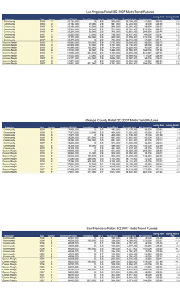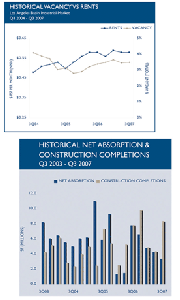2007 Retrospective: Some Rents Stabilize for the Short Term
After a steady increase in rising rents and prices, retail real estate rates in some of California’s most desirable retail areas may finally plateau.
quot;The rents appear to have settled down for the past couple of months,quot; said Philip Klaparda, senior associate of Beverly Hills–based real estate company Dembo & Associates. quot;This comes after a good six months to a year of big increases. They just can’t go up forever.quot;
Klaparda projects this plateau to last into the first half of 2008. Net rents on Rodeo Drive are averaging about $45 per square foot plus triple net. That’s up from $35 a square foot one year ago.
Robertson Boulevard is emerging as a new option for designer brands. Dolce & Gabbana, Polo Ralph Lauren and Chanel have signed leases on the street, where rents are averaging $20 to $25 per square foot, up from about $15 one year ago.
Klaparda said independent boutique owners can find better rates on West Third Street, where rents are about $5 per square foot. Boutique space on Montana Avenue in Santa Monica, Calif., is also hovering in the $5 to $6 range, while space on central Melrose Avenue in Los Angeles is running about $9 per square foot.
While Dembo sees rents stabilizing in some areas, the more long-run projection is for further growth, according to Los Angeles-based Sachse Real Estate Company Inc.
Sachse projects Robertson Boulevard to climb to the $20–$30 range from the current $15–$25; Melrose Place to the $15–$20 range from $10–$18; Third Street to the $6–$9 range from $4–$7; Rodeo Drive to $55 from $45; North Beverly Drive to $25 –$35 from $15–$25; Third Street Promenade to $20–$25 from $18–$20 and Abbot Kinney to $6–$6.50 from the current $4.50–$5.50.
In the more general neighborhoods and community shopping centers, triple-net rents in Los Angeles County increased to $29.52, from $27.95, with vacancies increasing to 2.9 percent from 2.4 percent, according to real estate research group REIS.
Orange County’s asking rents climbed to $31.45 per square foot from $30.07 while vacancies fell to 2.7 percent from 3 percent.
And in San Francisco, asking rents climbed to $33.60 a square foot from $32.75 while vacancies increased to 3.8 percent from 3.3 percent. Rates include base rents plus triple net, which covers taxes, insurance and maintenance.
Industrial space limited
The industrial market remained challenged by space limitations in 2007.
At the end of the third quarter, there were only 4.3 million square feet of ongoing construction activity in Los Angeles and Orange counties, reported Los Angeles real estate company Colliers International. Vacancy rates in this area are projected to remain in the 2 percent to 3 percent range.
However, construction is growing in the Inland Empire, which includes San Bernardino and Riverside counties, with 7.5 million square feet underway in the West Inland Empire and 18.4 million square feet in the East Inland Empire. As this space becomes available, it will expand the base in these locations by 7.3 percent. Vacancy rates are projected to climb some, particularly in the East Inland Empire, said Michael Gold, regional analyst for Colliers.
Sales and leasing activity for the Los Angeles Basin, which includes Los Angeles, Orange, Ventura, San Bernardino and Riverside counties, checked in at 102 million square feet with an average churn of 7.8 percent for the year. Net absorption for the past year totaled 19.1 million square feet, growing 1.5 percent. Overall vacancy rates increased slightly to 3.8 percent from 3.4 percent. Average net rents for industrial properties remained almost flat at 56 cents per square foot compared with 54 cents last year. The sale price of property averaged $117 per square foot, up from $110 last year.—Robert McAllister























